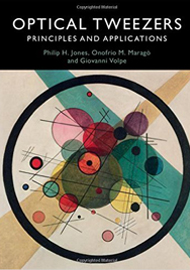
Why is Optical Tweezers, written by experienced researchers, destined to become a classic undergraduate and graduate textbook? The authors uniquely derive and explain the comprehensive theory of optical trapping (conservation of momentum) with clarity and mathematical rigor; they deftly derive three optical trapping regimes and discuss the limitations: geometrical optics, intermediate, and Rayleigh (dipole approximation) regimes. The chapters on Brownian motion, light scattering and computational methods are exemplary.
Next, the reader is carefully guided through the construction, troubleshooting, calibration and data acquisition of an optical tweezer instrument. These chapters on experimental approaches comprise a course on optical instrumentation. I encourage the reader to actually build their own optical tweezers; the educational benefit is enormous. The reader can access the free, customizable MATLAB software for the calculation of optical forces and calibration of their instrument. The book contains exercises to test and expand the reader’s understanding as well as problem sets, critical references and an index.
Optical Tweezers bridges the classical and the quantum regimes and scales from colloids to laser cooling and the trapping of atoms, and Bose-Einstein condensation. Numerous applications from cell biology, statistical physics, optical lattices, and molecules to nanostructures are presented; only the reader’s imagination limits further applications.
Review by Barry R. Masters, Fellow of AAAS, OSA and SPIE.
The opinions expressed in the book review section are those of the reviewer and do not necessarily reflect those of OPN or OSA.
